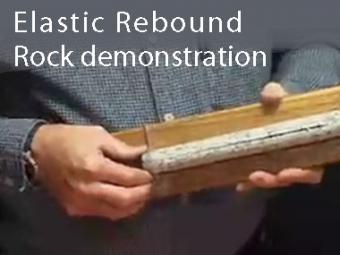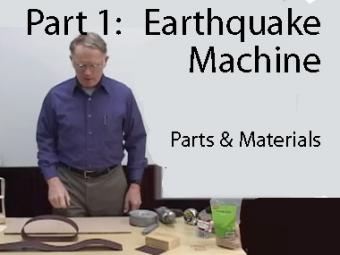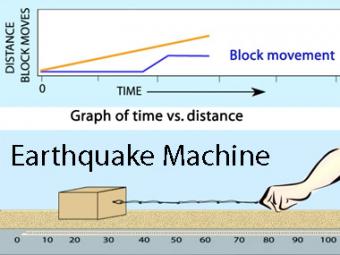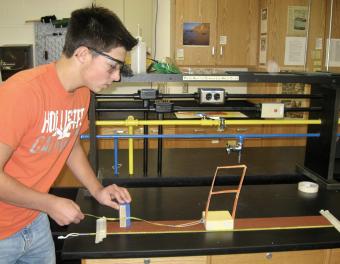28s Novice Chinese

How can we model elastic rebound in the classroom?
This animation shows the "Earthquake Machine" using two blocks with different grit sandpaper, thus different friction. Animation illustrates the build up and release of strain in locked and slow slip zones. The first block, in red, has fine sandpaper on its bottom and simulates the slow slip zone between tectonic plates. The second block with coarse sandpaper on its bottom side, simulates the locked zone of two plates. As the first rubber band is slowly pulled, strain builds up. Once enough energy is stored in the rubber band to overcome the friction of the sandpaper under the red block, the red block slips slightly. (Note: This is similar to the slow earthquakes or episodic tremor and slip events in the Pacific Northwest.) Once the red block slips, the rubber band between the red and blue wood block stretches slightly. As this rubber band continues to stretch, the strain between the blocks builds until the blue block finally moves. The movement of the blue block would be equivalent to a major earthquake.
Model graphs time vs strain to illustrate:

This demonstration shows that rocks are elastic by squeezing a slit core of rock.

This video shows how to build the "Earthquake Machine", a physical model that represents the “earthquake cycle”, the slow accumulation of elastic energy in rocks on or adjacent to a fault followed by rapid release of elastic energy during an earthquake.

Animation of the single-block "Earthquake Machine", a mechanical model of the earthquake process using a wood block, sandpaper, and rubber bands. This model shows how "Forces, Faults, and Friction" interact as elastic energy is slowly stored when the rubber back stretches and then is rapidly released as the block jerks during an "earthquake".

Graphing time vs. distance using the classic block-and-sandpaper "earthquake machine"

Using a block-and-sandpaper model, students collaborate in small groups to investigate how energy is stored elastically in rocks and released suddenly as an earthquake (the earthquake cycle). This activity emphasizes the role of mechanical models in understanding and testing ideas in science.